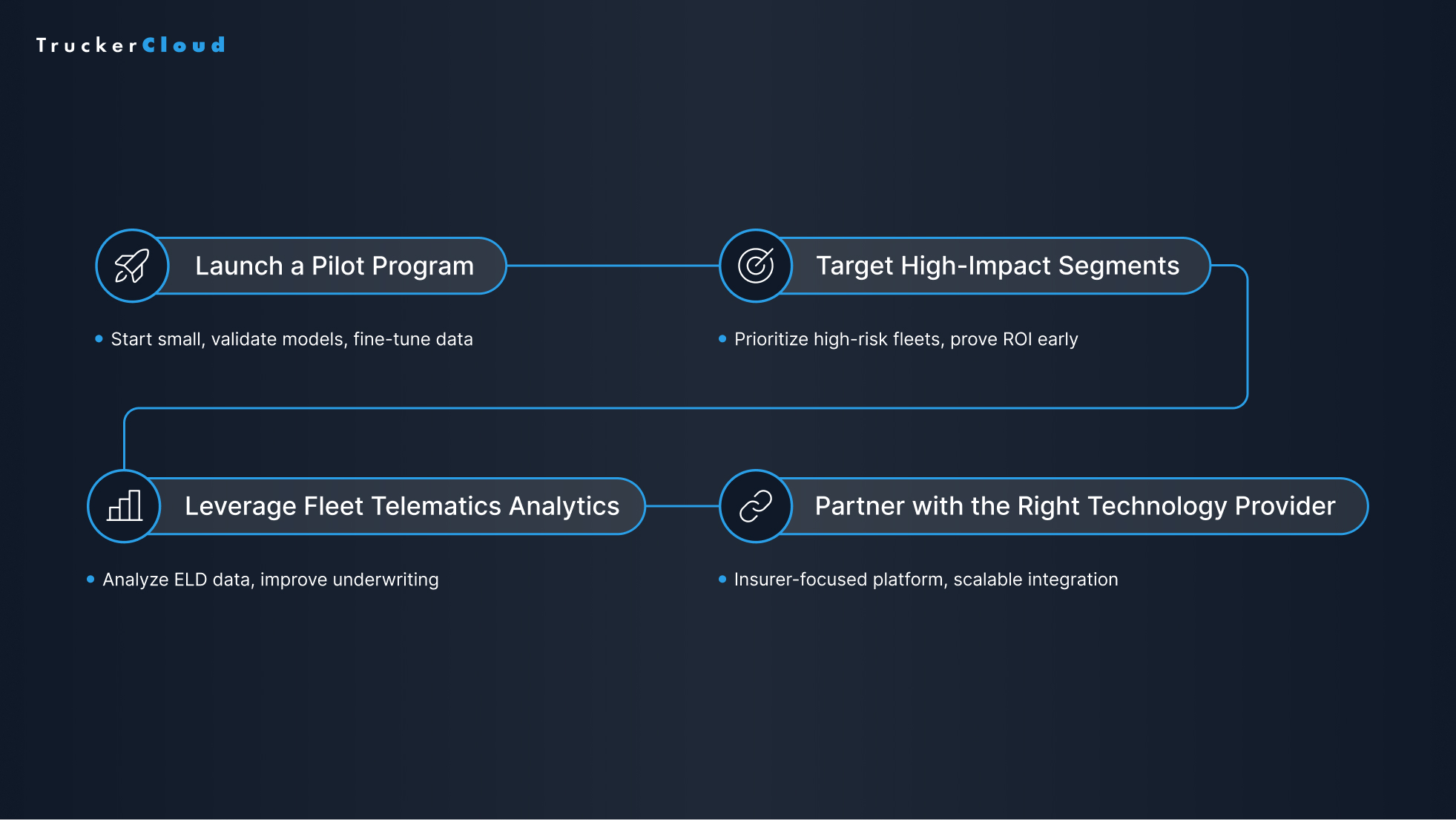Insurance Telematics ROI: How to Measure & Maximize Your Return
In the competitive commercial auto insurance market, every decision impacts the bottom line. That’s why understanding insurance telematics return on investment (ROI) is more important than ever. While the potential of telematics to transform underwriting and risk management is well-documented, many insurers hesitate to invest without a clear financial justification.
The upfront costs and operational resources required to launch a telematics program can be significant. However, the long-term benefits for your loss ratio, customer retention, and profitability can outweigh these initial hurdles.
This guide breaks down the key components of a successful program, explores the challenges in calculating the financial returns, and provides a framework for building a program that delivers a clear and compelling insurance telematics ROI.
What is Insurance Telematics ROI?
Insurance telematics ROI is not a simple cost vs. savings calculation. It’s a broader measure of how telematics programs drive value for insurers and policyholders alike. That value comes in both direct financial gains, like reduced claims payouts, and indirect benefits, such as improved underwriting accuracy, streamlined claims handling, and stronger customer relationships.
A comprehensive view of telematics ROI should factor in the following:
- Improved Loss Ratios: By pricing risk accurately and encouraging safer driving, insurers can reduce both claim frequency and severity.
- Increased Customer Retention: Usage-based commercial auto insurance allows for fair pricing, personalized driver feedback, and ongoing value-added services.
- Enhanced Operational Efficiency: Real-time data and automation improve underwriting and claims workflows.
Why ROI Matters for Commercial Auto Insurers
The ROI of a telematics program is particularly compelling for commercial auto insurers. The high costs of fleet claims, variety of operational risks, and growing need for innovation all point toward telematics as a competitive differentiator.
Here’s how a well-designed telematics program can deliver a strong ROI:
- Data-Driven Underwriting: Move beyond broad risk categories to granular behavioral risk models that reward safe fleets and deter high-risk accounts.
- Proactive Risk Management: According to the U.S. Department of Transportation, using real-time data to identify and correct unsafe driving habits actively prevents accidents.
- Streamlined Claims Management: Crash detection telematics and automated First Notice of Loss (FNOL) processes reduce fraud and minimize claims handling costs.
- Reduced Premium Leakage: Accurate usage tracking identifies unlisted vehicles and ensures premiums match actual exposure.
The Challenges of Calculating ROI
Despite its promise, calculating telematics ROI can be complex. Initial investment in devices, data subscriptions, and management platforms can be substantial. It may take months to gather enough data to demonstrate measurable changes in loss ratios.
A Strategic Framework to Maximize Your ROI
There’s also the challenge of isolating performance changes caused by telematics from other market influences. For example, changes in claim frequency may also be affected by regulatory shifts, economic cycles, or seasonal patterns.
The most successful insurers approach telematics adoption with a strategic, data-driven plan. Here’s how to position your program for measurable returns:

1. Launch a Pilot Program
Start small to refine your usage-based commercial auto insurance model before rolling it out fleet-wide. This allows you to validate predictive risk scoring models and fine-tune data integrations.
2. Target High-Impact Segments
Focus first on high-risk fleets or sectors with poor historical loss performance. Early improvements in these groups can generate strong ROI evidence for stakeholders.
3. Leverage Fleet Telematics Analytics
Use ELD data analysis to understand patterns like speeding and idle time. These insights improve underwriting decisions and create more accurate behavioral risk models.
4. Partner with the Right Technology Provider
Choose a platform purpose-built for insurers, capable of seamless integration with telematics and camera systems. The right partner can shorten time to value and enhance program scalability.
The Future of ROI Measurement
As AI in insurance underwriting matures, telematics programs will rely on more advanced analytics and predictive modeling. Instead of looking solely at loss ratios, insurers will also measure ROI in terms of operational efficiency, customer satisfaction, and market competitiveness.
Ultimately, insurers that build a strong telematics foundation now will be better positioned to adapt to future trends in data-driven insurance decisions and evolving risk assessment methodologies.
How TruckerCloud Weighs In
At TruckerCloud, we've seen firsthand how the right telematics strategy can transform commercial fleet insurance programs. With integrations to over 100 ELD and camera providers, our platform enables insurers to quickly access the high-quality data they need for smarter underwriting.
With TruckerCloud, you can:
- Launch in weeks instead of months
- Access high-fidelity data
- Utilize insurance-specific workflows
Are you ready to see how TruckerCloud can help you achieve a strong insurance telematics ROI?
Schedule a demo today to see how our platform can help you build a more profitable and sustainable commercial auto insurance business.



